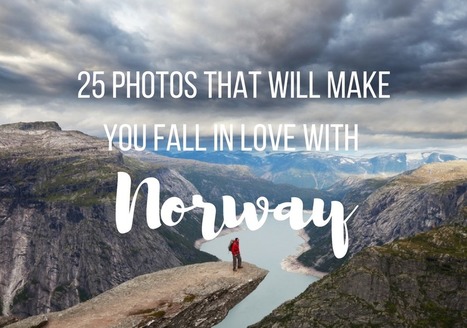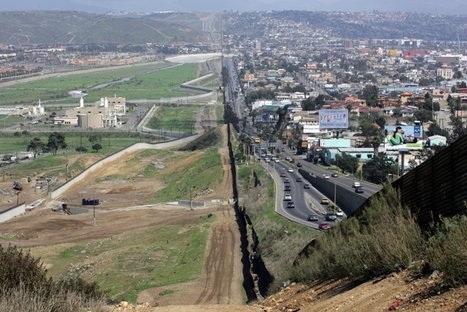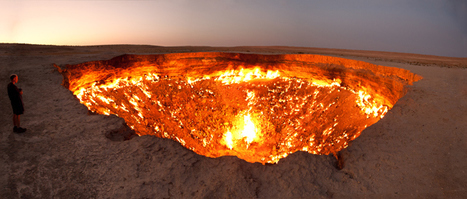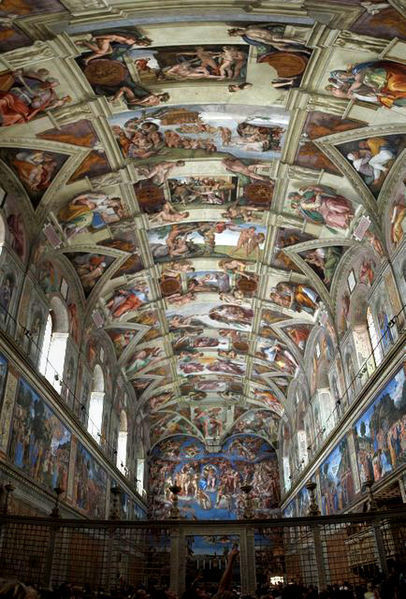"So how gorgeous is Norway? From its majestic wildlife, captivating Northern Lights shows, and snowy mountains, to its vivid landscapes, and mystifying fjords, Norway is a must-visit destination for anyone who loves the outdoors. Plus, opportunities for hiking, kayaking, glacier climbing, fishing, and skiing are endless! If Noway wasn’t already on your travel bucket list, I bet it is now!"
Get Started for FREE
Sign up with Facebook Sign up with X
I don't have a Facebook or a X account
 Your new post is loading... Your new post is loading...
 Your new post is loading... Your new post is loading...

Ryan G Soares's curator insight,
December 3, 2013 11:12 AM
I find it quite facinating how the world changes. Some of the worlds most beautiful things may not be here 30 years from now. It is quite humbling that things that man builds can be taken away by Mother Nature. As the years pass the memories made will be vanished by the environment. 
Hector Alonzo's curator insight,
October 14, 2014 11:40 PM
Interesting how the physical landscape of one country can be effected by the surrounding water that connects two different countries. To have some areas of Louisiana be overtaken by the Gulf of Mexico is astounding, seeing an area that has stayed relatively the same be wiped off the map is interesting

Jess Deady's curator insight,
April 17, 2014 3:25 PM
This is an important lesson, especially for those who actually live in Arizona/Mexico and have seen the border itself. Learning about the Arizona/Mexican border is important and shouldn't be left solely to teaching it only in those areas. The maps included in the lesson plan are efficient and could be used in the high school setting. |

Kelsey McIntosh's curator insight,
February 13, 2018 9:13 PM
In the Chiapas, Mexico there is a 16th century church that has been revealed due to the decrease in a reservoirs water level. This brief article is accompanied by pictures of the church that was abandoned in the 1770's do to the plague. According to the article, this is the second time the place of worship has been seen since 2002.

Olivia Campanella's curator insight,
September 19, 2018 10:53 AM
This 16th century church first emerged from the waters of the Nezahualcoyotl reservoir in the Southern Mexican state of the Chiapas. And since the reservoir was completed in 1966 with the waters dropping low enough to reveal the church for the 2nd time. The waters have dropped low enough in 2002 for people to actually walk inside and stand on.

Kelvis Hernandez's curator insight,
September 29, 2018 11:53 PM
"You go in the cage, cage goes in the water, you go in the water. Churches in the water, our church." At least I am pretty sure that's how the line from Steven Speilberg's 1975 thriller "Churches". This 16th-century church just emerged from the nezahualcoyotl reservoir in Mexico which hasn't occurred since 2002. The temple of Santiago was built by monks who came to Mexico around the late 16th century, but it was ultimately abandoned after being hit by the plague in 1773-1776. The drought in the area caused the water level to drop 82 feet. This being the second time water levels have revealed the church, in 2002 visitors were able to walk into the temple itself. 1

Louis Mazza's curator insight,
March 12, 2015 4:58 PM
Unnatural landscapes. Amongst all the new technology and graphics, the world still holds phenomena’s that can leave any persons jaw dropped. This article on buzzfeed shows 25 images that can amaze you. In Mt. Roraima, Venezuela there is a slab of land that seems to be suspended in the clouds. The Metro in Stockholm, Sweden resembles a space station in the rocks. The tunnel of love in the Ukraine looks like a path carved out of bush and also a romantic place for a date. The tulip Fields in Lisse, Netherlands looks like a grounded rainbow. Lapland, Finland is home to massive natural snow creatures. The mountains of Zhangye, China resembles the colors and look of Zebra stripe gum. Lake Rebta in Senegal looks like your floating in tomato soup. 
Kevin Cournoyer's curator insight,
May 6, 2015 11:43 AM
Physical geography and landforms are something that have amazed people for millennia. The world's tallest mountains, deepest oceans, widest rivers, and largest deserts have, at various times, astounded, baffled, and hindered human beings. Some physical features are helpful to human progress (cities built on hills are more defensible, rivers allow for irrigation for agriculture) and others delay it (mountains are difficult to traverse, oceans are large and treacherous to navigate). And then there are landforms or geographic features that are just downright strange or unusual, like the ones listed in this article.
While looking at pictures of these places or visiting them may be fun, they also provide us with a valuable lesson about nature. Nature is a force to be reckoned with, as it can produce some pretty amazing and unusual things. People sometimes do not stop to think what nature can do and as a result, suffer the consequences (Napoleon, and later Hitler's ill-fated invasions of Russia, for instance). Geography and natural landforms can be invaluable tools in human progress, but it should also be kept in mind that they are part of nature, and that nature is an unpredictable and sometimes violent force. As with anything, then, nature and geography must be respected and feared to avoid making the same mistakes that others have made in the past.
Nicholas A. Whitmore's curator insight,
December 17, 2015 11:34 AM
Another interesting failure of the Soviets during the Cold War. One really begins to question their competence when reading about this, Chernobyl and the Aral Sea. I honestly don't see how anyone would consider lighting a major gas leak on fire would help the situation either. Regardless this site stands as a testament to the influence we have on the geography of area through our reshaping for society. The incident also now helps Turkmenistan economically because it offers tourist attraction revenue. Additionally while the gallery had many fascinating images from around the world this one captivated me due to its historical nature and affect it would have had on the region. Hopefully the site doesn't ever become too dangerous do to the flammable substances because I would imagine that is a possibility (also hopefully there is not too much environmental damage from it either).
Cam E's curator insight,
February 27, 2014 10:50 AM
This is a very cool opportunity due to the fact that photography isn't usually allowed in the Sistine chapel. Of course it can't compare to the beauty of the place in person, but in some ways it's almost more powerful as this room is usually filled to the brim with tourists, seeing it empty is a bit more striking as you can appreciate the fool instead of missing it in the crowds of people. |
















My wife lived in Norway for 18 months, and her love for this country is infectious. The stunning physical geography leads to some equally magnificent cultural landscapes that were forged in a very rugged, inhospitable environment for early human settlers.
Tags: Norway, place, tourism, physical, Arctic, geo-inspiration, images, art, landscape.